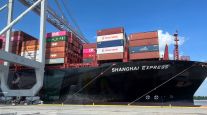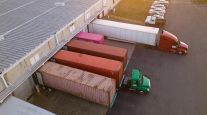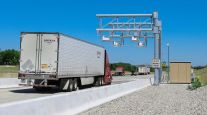Staff Reporter
Kansas DOT Grants Help Ease Freight-Route Congestion
Certain cities in Kansas are using state Department of Transportation funding to reshape roads near distribution centers that draw freight congestion.
KDOT recently divided $15 million across 30 projects through its City Connecting Link Improvement Program. According to Tod Salfrank, assistant bureau chief at KDOT, a City Connecting Link is any routing of the state highway system that is located within the corporate limits of a city.
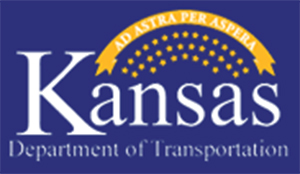
Hillsboro, Kan., received $600,000 to add a bypass lane and a turn lane to U.S. Route 56 at its intersection with a secondary road that leads to two major distributors and the Hillsboro County Hospital.
Larry Paine, administrator of Hillsboro, said the “turn pocket” will make it easier for freight carriers to reach the distribution centers, namely Barkman Honey and Container Services Inc. He said he had these two businesses in mind when the city applied for KDOT’s award.
“There’s an awful lot of traffic that goes out of those two businesses,” Paine said. “We have quite a bit of outbound truck traffic going to various places.”
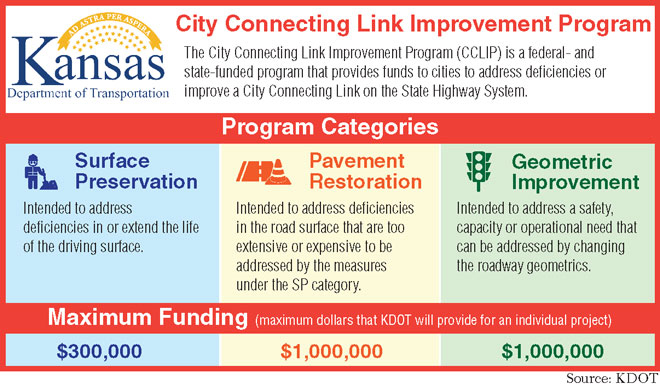
Barkman Honey supplies to Wal-Mart Stores, which ranks No. 3 on the Transport Topics Top 100 list of private carriers in North America.
In addition to facilitating freight transportation, Hillsboro’s U.S. 56 renovation will improve safety, Paine said. According to KDOT, Hillsboro sees 1,210 trucks per day on this route. The week Hillsboro representatives interviewed with KDOT as part of its application process, some of Paine’s friends were hit by a gravel truck at the intersection that will be treated by the grant. Paine said the truck destroyed the car, and his friends spent time in the hospital recovering.
He said the turn lane will mitigate the number of “near-misses” that occur along U.S. 56.
“It safely gives a car opportunity to slow down enough to make the turn safely without having traffic running up their tailpipe,” Paine said. “What we’re trying to do along that corridor is provide enough ability for cars and trucks to be able to co-exist without having the rear-ends and head-ons we’ve had in the past.”
Scott Moore, administrator of Ellsworth, Kan., said the city is using its $1 million KDOT grant to add northbound and southbound turn lanes to the small portion of U.S. Route 156 that is flanked by Great Plans Manufacturing on one side and a John Deere dealer on the other. Both businesses established centers in Ellsworth over the past 10 years.
KDOT reported 720 trucks travel on U.S. 156 through Ellsworth every day. Moore said the route is the gateway to the dairy and beef-packing plants in the Southwest portion of the state.
“Those two businesses moving to the intersection and the size of the vehicles that are loaded on those trucks definitely warranted serious consideration,” Moore said.
Not all of the City Connecting Link Improvement Program grants fund lane additions; some are directed to pavement restoration.
The city of Eureka, Kan., was awarded $1 million for a pavement restoration project along a 1.5-mile strip of U.S. Route 54 that runs through the city. U.S. 54 is an east-west highway that runs from Onarga, Ill., to El Paso, Texas.
Eureka administrator Ian Martell said this is the first time this four-lane highway is receiving extensive treatment.
Some 730 trucks travel through Eureka on U.S. 54 every day, according to KDOT. Martell said many of these trucks haul equipment to surrounding wind-generation farms. He said trucks carrying 300-foot blades of wind turbines use U.S. 54 because it has few overhead obstacles, although one exceptionally massive load required city officials to temporarily take down the city’s stoplights.
“Windmill trucks” are also a common feature of freight traffic in Phillipsburg, Kan., another city that received $1 million restoration project, said Timothy Driggs, public works supervisor for the city.
“There’s places that are kind of hazardous right now,” Driggs said. “There isn’t a truck driver that comes through this town that doesn’t feel those bumps and ruts and potholes that we’re dealing with every day.”
Projects for the City Connecting Link Improvement Program are divided into three categories: surface preservation, pavement restoration and geometric improvement.
“You could make a case for all of them; that they’re all there to help enable the freight move,” Salfrank said.


